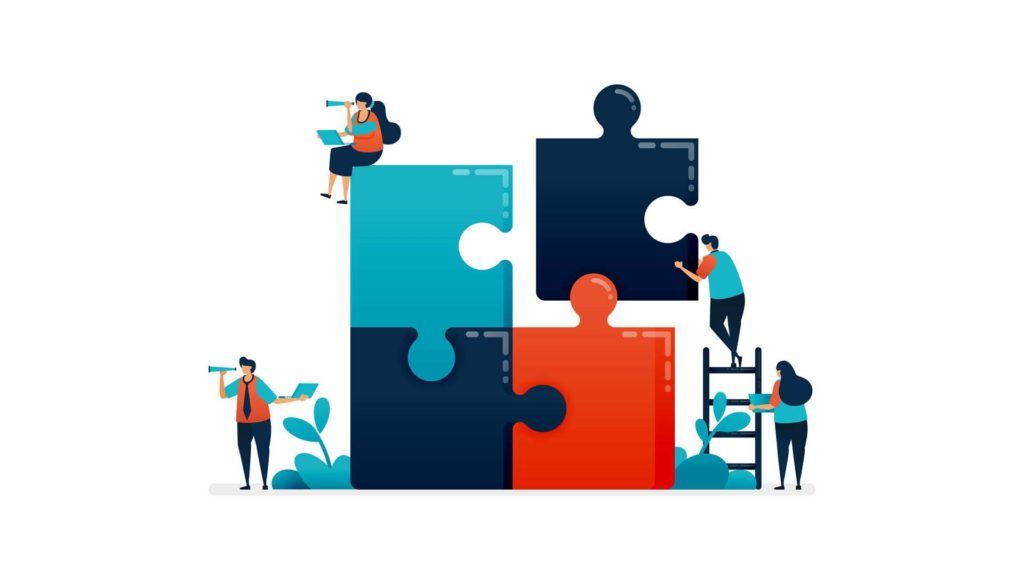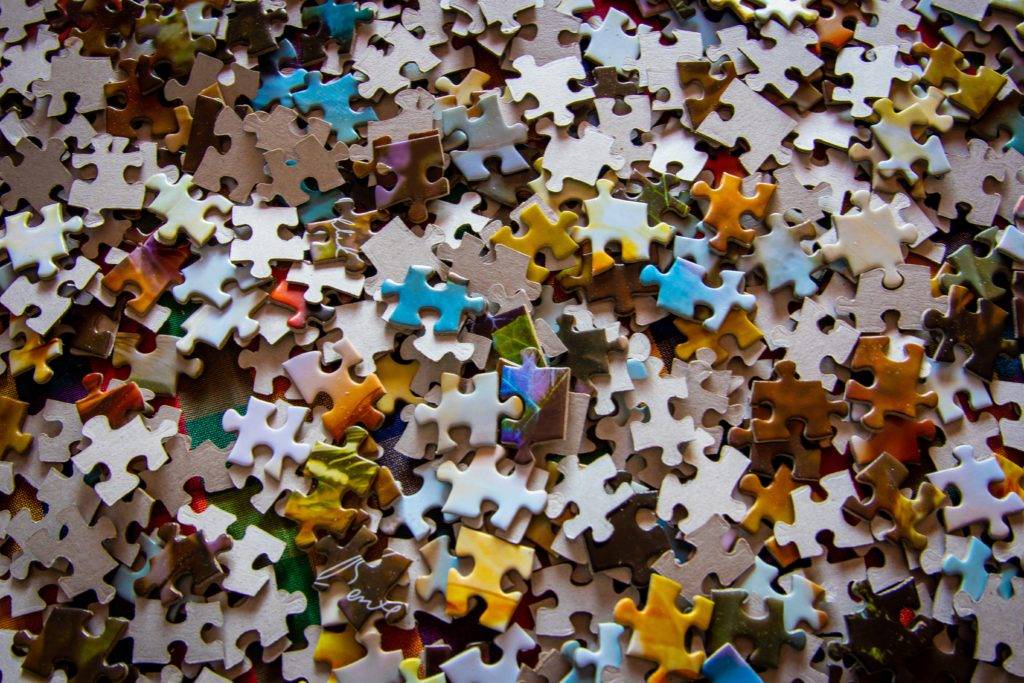Problem-solving is a higher-order cognitive function. It refers to thought processes directed towards solving a specific problem. In order to solve a problem, you need to form a set of responses and choose the best among them. In this article, we will discuss the various theories of problem-solving and suggest ways in which you can sharpen your problem-solving skills.
The problem-solving process
- Identify the problem: This is the stage where the individual becomes aware that a problem exists.
- Interpret it: In this stage, the individual interprets the problem and places it in his or her subjective reality.
- Make a list of possible options: The individual makes a list of all possible ways to overcome or solve the problem. It may not be an actual physical list. Rather, most of the time, it is a mental list.
- Choose the most viable option: In this stage, the individual weighs each choice and chooses the most favorable or suitable option and devices a course of action.
- Allocate resources: In this stage, the individual identifies and allocates resources (like time, energy, money) to implement the action plan.
- Monitor the situation: This is the stage where the individual receives external feedback regarding the problem-solving situation. If the action is not working, the best option is to abort the plan and move on to the next choice.
- Resolve the problem: The individual reaches this stage when the problem is solved.

The Gestalt Theory of Problem-Solving
The word “gestalt” is derived from a German word and it literally means an organized whole. Gestalt psychologists basically claim that the whole is more than the sum of its parts.
This theory proposes that insight is key to problem-solving. Insight is the process of moving from a state of not knowing the solution to a problem to a state of knowing the solution. Individuals derive a representation of their problem which influences the way they see the problem. Teachers following the gestalt way try to build insight so that students are able to better represent the problem. Insight formation can happen in various ways:
- By looking at the problem in a different light.
- Looking at all the components of the problem together as a whole.
- Removing mental barriers that hinder problem-solving.
- Occurs suddenly.
- By visually representing the problem.
Hence, if you are fond of this theory of problem-solving, you would probably look at the whole problem instead of breaking it down to its constituent parts. This goes totally against the behavioral school of thought.
Inductive versus Deductive Approach
The inductive and the deductive approach to problem-solving refer to whether you move from specific to the general or from the general to the specifics of the situation.
In the inductive approach, people induce broader areas based on specific cases. For example, you read specific sentences and find errors before moving to the rules of grammar. Thus, we move from specifics to the broader areas of generalization. In other words, we derive the conclusions from specific observations. If you are trying to form a theory based on clinical observations, you may be following inductive problem-solving.
On the other hand, in the case of deductive reasoning, we first focus on the broader or general aspects and then move to the specifics. If you are forming hypotheses about a phenomenon based on a theory, you are using deductive problem-solving.
General Problem Solver
This is a theory of problem-solving but is stated in the form of a simulation. It was developed by A. Newell and H. Simon. This information-processing approach assumed that problem-solving is a function of memory, control processes and rules. The entire problem space is broken down into 2 parts:
- The goal to be achieved
- The transformational rules to be applied.
The General Problem Solver uses a means-end-analysis approach to divide the problem into chunks and then solve each part, instead of looking at the problem altogether.
This theory uses the computer analogy to problem-solving. When you have a problem to solve, identify the objects that need to be transformed or changes. Then attempt to reduce the difference between the objects and finally apply some operator on them.
Internal Representation Model
This model of problem-solving was developed by observing how participants play a board game. According to this model, individuals solve problems by internally representing them in their own manner. Such internal representations are highly subjective. In addition, they may be far from the actual objective reality.
How does internal representation occur? Individuals rely heavily on past experiences and memory. They think actively about how they solved similar problems in the past. This is the top-down approach to information processing. The analysis and the solution hunt begin with the formation of a hypothesis which is verified when the stimuli are detected.
8 great techniques to solve a problem
Breaking it down
Contrary to what the Gestalt School claims, most problems are best solved if you break it into smaller chunks. First and foremost, smaller problems seem more manageable to us. Hence, it is more likely that you will have the motivation to persist in it as compared to a larger problem. For instance, if your problem is to find your way to your aunt’s house in a different and unknown city, your best strategy is to first find your way to drive to the city. After you have reached her city, you may look for her neighborhood, then her road number and finally locate her house. If you think about finding her house from your home, you will probably find it too difficult.
Of course, there may be problems like solving a mathematical equation that needs you to focus on the whole. However, for most day-to-day activities, breaking the problem into chunks would work for you.
Social Network
You may at times, realize that your problem is too big and overwhelming for you to solve alone. It is a very normal situation because the human brain can process a limited amount of information at the same time. In addition, when you have already spent a lot of time unsuccessfully dealing with a problem, you might feel exhausted. In such times, you may use your social resources like family, friends, neighbors and colleagues for help. They may help you choose the best solution or offer more choices to your set of solutions.
Individuals with high emotional intelligence are often better able to seek social help in times of need. You may refer to our article on the MAGICS framework to enhance emotional intelligence by clicking here.
Take a break
Many times, you may be overworked and overburdened. As a result, even a simple problem appears too difficult. In such situations, you may consider taking a break and coming back to the problem with a fresh mind. This is a useful trick, especially for students. Solving scholastic problems for too long might exhaust you, or not being able to solve a difficult problem might dishearten you. It is best to let your mind relax in such situations.
Learn from past mistakes
Most successful people say that they learned more from their mistakes than their successes. You should carve this valuable suggestion in gold. Remember what went wrong when you encountered a similar problem earlier. What mistakes did you make? Try to avoid them this time. Knowing what does not work will also help you eliminate a few decision choices. In addition, be aware of your peers’ mistakes while solving the same problem. You do not need to fall into the same pit.
Trial and Error
Many times, you will not be able to choose the best solution no matter how hard you try. In such cases, you may begin by trying the solution you think is best for you. If that works out, rejoice. In case it does not work out, try the next best solution and so on till you solve the problem. Although this might not sound like a very economical way to arrive at the solution, sometimes you might not have any other option.

Heuristics
Heuristics are rules of thumb that work most of the time. They are essentially mental shortcuts and might not lead you to the right solution all the time. However, there is no harm in trying them out. It will help you eliminate some options and save some time.
Algorithms
It is a step-by-step formula that will definitely lead to the correct solution. You may use algorithms to solve mathematical equations or install computer programs. However, in most real-life scenarios, you will not find an algorithm. This is because real life is very dynamic, complex and uncertain. There are a lot of variables beyond our control. Hence, you will not find algorithms for most problems like how to deal with a controlling boss!
Insight
Many times, the solution to a problem comes to you all of a sudden. You may have relied on some insight you developed while working on similar problems in the past. Mostly, the actual process underlying insight lies outside our conscious control and knowledge.
Conclusion
In sum, problem-solving is a very complex cognitive process that we often engage in. Most of the time, we do not realize the subtle complexities involved in the process.

3 thoughts on “What is Problem-Solving”